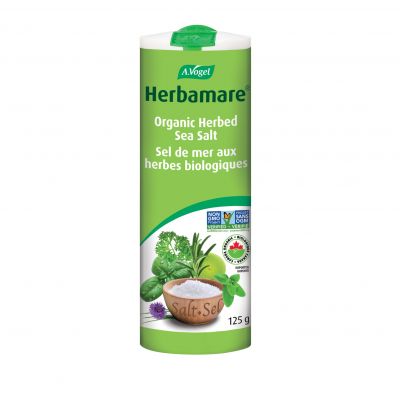How do we perceive the world differently across the senses?
- Touch. Lying underneath the surface of the skin are various receptors that can detect changes in temperature (thermoreceptors), pressure (mechanoreceptors) and even our position in the current space (proprioceptors). There are more to help register stretch, hydration and even changes in electrolytes. Each person has different concentrations of mechanoreceptors across body. If you were to touch a brick wall that had been exposed to the sun all day, you may register it as being warmer and rougher to the touch than others would.
- Smell. Much like in the skin, scent receptors can vary between each person because there are differences in the olfactory receptor genes. Someone may not smell anything while another is hypersensitive to the 'obvious' floral smell emanating from a bouquet.
- Taste. Many readers have that one friend who puts enough hot sauce on their foods that you think they would be seconds away from breathing fire. In reality, they shrug it off as not that hot. As you have probably
- Hearing. It would be an oversight not to mention the impact of the changing music industry and the way sound is delivered. Headphones were originally invented in 1910 by engineer Nathaniel Baldwin. Scientists and health specialists understood the impact of high-decibel sounds like jet engines and power tools, but what about the pods sticking out of our ears. Over time, it became clear that there was a price to pay for listening to your music too loudly. The tiny hair cells deep in the inner ear can be damaged, making them unable to transmit sound. Unlike other areas of the body that can recover and heal from all but the most dramatic of injuries, the damage to hair cells is permanent. Modern phones now come with warnings if you have been listening to something at an extreme volume level for an extended period of time.
- Sight. Much like the various receptors found in the skin, there are those found in the eye. In addition, there are many delicate and sensitive structures that are poor healers and may never recover. There are individual changes between us all through factors like the cornea being scratched, pollution causing inflammation, the shape of the lens changing or atrophy of the ciliary muscles.
How prone are the eyes to various symptoms?
To say very would be an understatement considering how exposed they are to external irritants, allergens and environmental changes. It is estimated that almost one in seven older adults suffer from symptoms of dry eyes. This could be due to underproduction of the tears needed to lubricate the eyes, or even rapid evaporation in hot, dry climates.
There is even an association with menopause due to fluctuating hormone levels. The tear film is crucial in lubricating and nourishing the eye, removing debris, creating refraction to support vision and oxygenate the various structures of the eye.
What are some of the other risks to my eye health besides dry, hot air and debris?
- Infectious agents including Hepatitis C, HIV and chlamydia
- Diseases and conditions like scleroderma, Parkinson's, diabetes mellitus and Sjögren's Syndrome
- Forced air through HVAC systems
- Various medications including anti-hypertensives, antihistamines, antidepressants, hormone replacement therapy and those for acne
What are some of the ways to nourish the eyes and maintain my vision long term?
While it may sound obvious, blinking helps relubricate the eyes and give them a little rest. This is overlooked as an easy intervention because of the time we spend on our screens where we may blink less than half of the time when away from screens. Purchasing a humidity monitor can inform you whether your home falls within the recommended 40 to 60% range. This prevents you from losing too much moisture to a dry climate at home.
Other portable products like Eye Drops contain ingredients that maintain the tear film. Hyaluronic acid is one of the components of this gelatinous layer of the eye known as the vitreous humor. Hyaluronic acid is naturally antibacterial and incredibly moisturizing. Euphrasia officinalis, known less formally as eyebright, is very anti-inflammatory and helps with red eyes. In a randomized, double-blind, placebo-controlled trial on preterm neonates showed that Euphrasia drops resulted in less redness and tearing, leading to increased comfort in the babes.
Other large-scale trials like the Women's Health Initiative have demonstrated a relation between an omega-3 fatty acid deficiency and an increased risk of developing dry eye due to dysfunctions in the meibomian glands. Vegan options like VegOmega3 extract fatty acids from algae and flaxseed to support eye health.
This article does not provide medical advice and is intended for informational purposes only. It is not a substitute for professional medical advice, diagnosis or treatment.
References
1. Diószegi, Judit, Erand Llanaj, and Róza Ádány. "Genetic background of taste perception, taste preferences, and its nutritional implications: a systematic review." Frontiers in genetics 10 (2019): 1272.
2. Hutmacher, Fabian. "Why is there so much more research on vision than on any other sensory modality?." Frontiers in psychology 10 (2019): 2246.
3. Javadi, Mohammad-Ali, and Sepehr Feizi. "Dry eye syndrome." Journal of ophthalmic & vision research 6.3 (2011): 192.
4. Meier-Girard, Delphine, et al. "Euphrasia eye drops in preterm neonates with ocular discharge: a randomized double-blind placebo-controlled trial." Frontiers in pediatrics 8 (2020): 449.
5. Melis, Melania, and Iole Tomassini Barbarossa. "Taste perception of sweet, sour, salty, bitter, and umami and changes due to l-arginine supplementation, as a function of genetic ability to taste 6-n-propylthiouracil." Nutrients 9.6 (2017): 541.
6. Partos, Timea R., Simon J. Cropper, and David Rawlings. "You don't see what I see: Individual differences in the perception of meaning from visual stimuli." PloS one 11.3 (2016): e0150615.
7. Pirnazar, Payman, et al. "Bacteriostatic effects of hyaluronic acid." Journal of periodontology 70.4 (1999): 370-374.
8. Portnuff, Cory DF. "Reducing the risk of music-induced hearing loss from overuse of portable listening devices: understanding the problems and establishing strategies for improving awareness in adolescents." Adolescent Health, Medicine and Therapeutics 7 (2016): 27.
9. Stoss, Matthias, et al. "Prospective cohort trial of Euphrasia single-dose eye drops in conjunctivitis." The Journal of Alternative and Complementary Medicine 6.6 (2000): 499-508.
10. Trachootham, Dunyaporn, et al. "Differences in taste perception and spicy preference: a Thai–Japanese cross-cultural study." Chemical senses 43.1 (2018): 65-74.
11. Trimmer, Casey, et al. "Genetic variation across the human olfactory receptor repertoire alters odor perception." Proceedings of the National Academy of Sciences 116.19 (2019): 9475-9480.
12. Widén, Stephen E., et al. "Headphone listening habits and hearing thresholds in swedish adolescents." Noise & health 19.88 (2017): 125.
13. Ziemanski, Jillian F., et al. "Relation between dietary essential fatty acid intake and dry eye disease and meibomian gland dysfunction in postmenopausal women." American journal of ophthalmology 189 (2018): 29-40.








